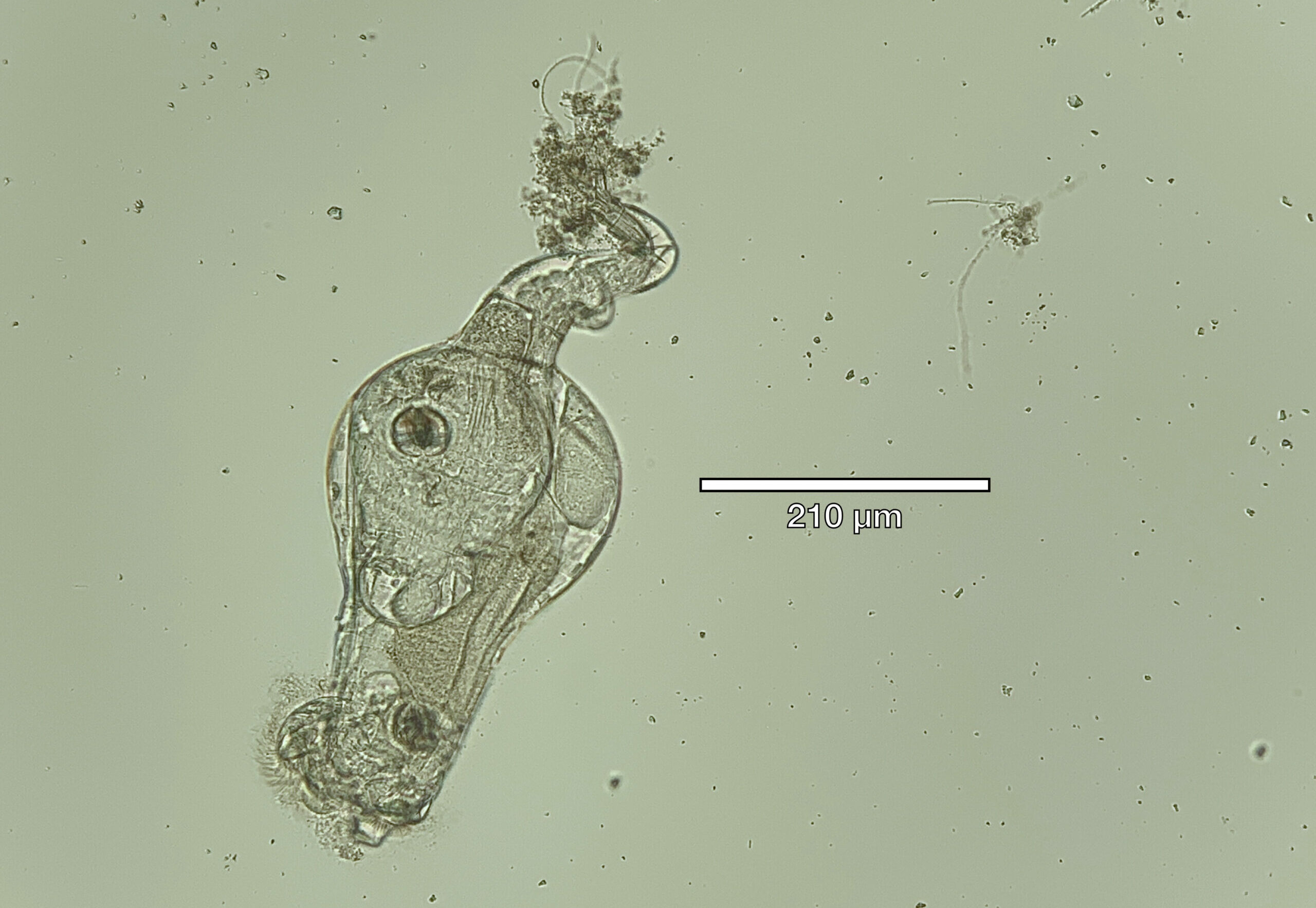The Secret Life of Bugs:
Rotifers
You won’t believe what we were able to catch on camera.
by Natalie Walton, Aquafix Microscopist

I think we can all agree that rotifers are fascinating creatures. They are not only cool to look at, but they also help create a clear effluent in wastewater treatment too! Not that long ago I was lucky enough to witness firsthand just how fascinating rotifers truly are. To this day, it is still one of the coolest and most exciting moments I’ve had at the lab. So, I’d like to share it with you.
The day it happened was already starting out on a good note. The lab team was preparing for members from our warehouse to come and visit. They often hear about what we do at the lab but haven’t had a chance to see it firsthand. I, as the microscopist, was preparing to show them what a wastewater sample looks like under the microscope. We had received quite a few samples earlier in the week so I knew I could find something fun and interesting to share. Little did I know just how interesting the sample I picked would actually be.
With the slide prepped, I started scanning to find points of interest to show the warehouse team and I found this! A pregnant rotifer!
Now, a pregnant rotifer is not a new sight for me. But one where I can see the baby trying to come out is! The chances of being able to observe a rotifer birth are very slim, so I, along with the nearby testate amoeba watched. Unfortunately, right as the baby rotifer was almost completely out, the slide dried out. Then, shortly after, not realizing 20 minutes had elapsed, the tour group walked in. Now unprepared with a dried-out slide and shaking from excitement, I decided to play back a timelapse of the birth for my audience instead. Needless to say, the warehouse team learned a lot more about rotifers and rotifer pregnancies than was planned.
So, you, the reader, do not feel left out, here are just a few of the many interesting facts I shared, compliments of the article The Secret Sex Lives of Rotifers: Sex, Asex and Cannibalism by T. Ramakrishna Rao.
- Rotifers have “highly adaptive reproduction strategies.” Depending on the phylum of rotifer, they can reproduce sexually, asexually, or both. Some rotifers can even switch between the two.
- Unlike the graceful or sometimes sedentary movements of a female rotifer, male rotifers swim fast and constantly, almost as if in a frenzy. They do this in hopes of increasing their chances of encountering a compatible female.
- Once a male has encountered a possibly compatible mate, they try and court her. He does this by swimming in circles around the female while maintaining contact with her.
- Male rotifers do not eat or even have a digestive system because their sole purpose is to mate with a female and fertilize her eggs. So naturally, they live less than half as long as their female counterparts.
- There is a type of rotifer, Asplanchna, that eats other rotifers. That’s why the males have evolved to have protuberances that instantly puff up upon contact with a potentially predatory female mate. When the protuberances puff up, the male appears bigger (since they are about 20-30% smaller than females) which reduces the chances of them being swallowed.
Thank you for allowing me to share this rare event with you! Don’t forget to check out the attached video for the full experience and stay tuned for the next Secret Life of Bugs.

About the Author
Natalie Walton joined Aquafix in 2019 and focuses on performing microscopic analysis for customer samples, as well as conducting experiments on innovation in grease removal. She was also a key contributor to creating our Microorganisms Database supplying identification tips and research.

Great!